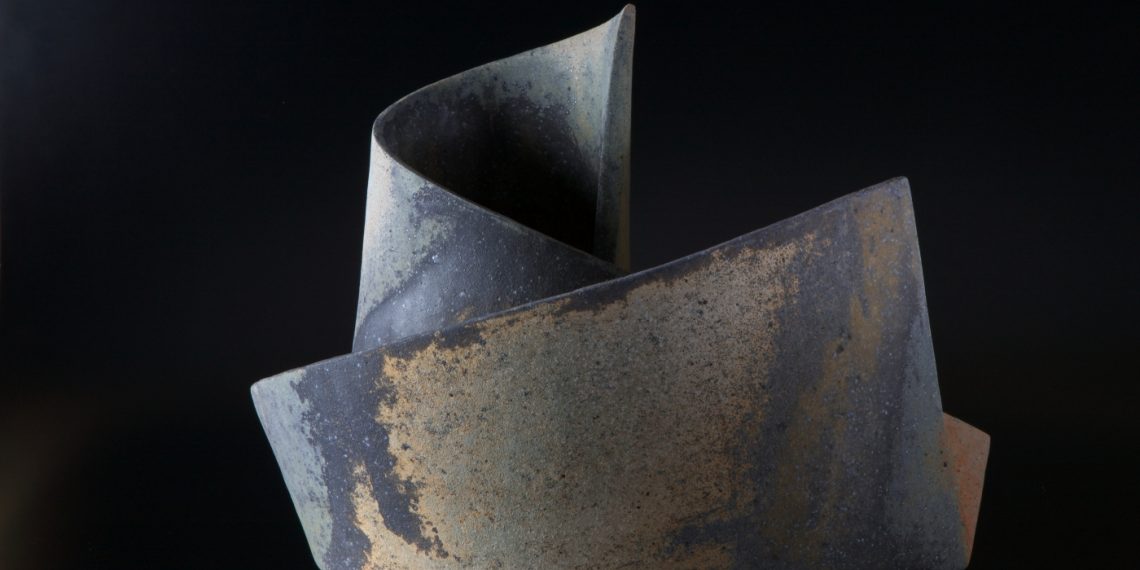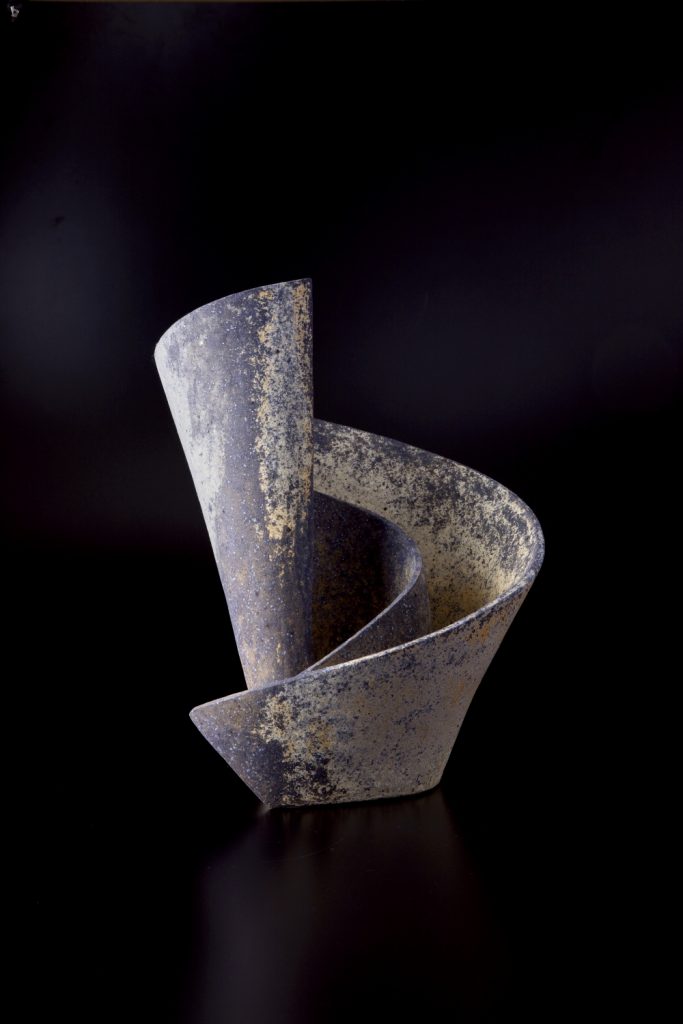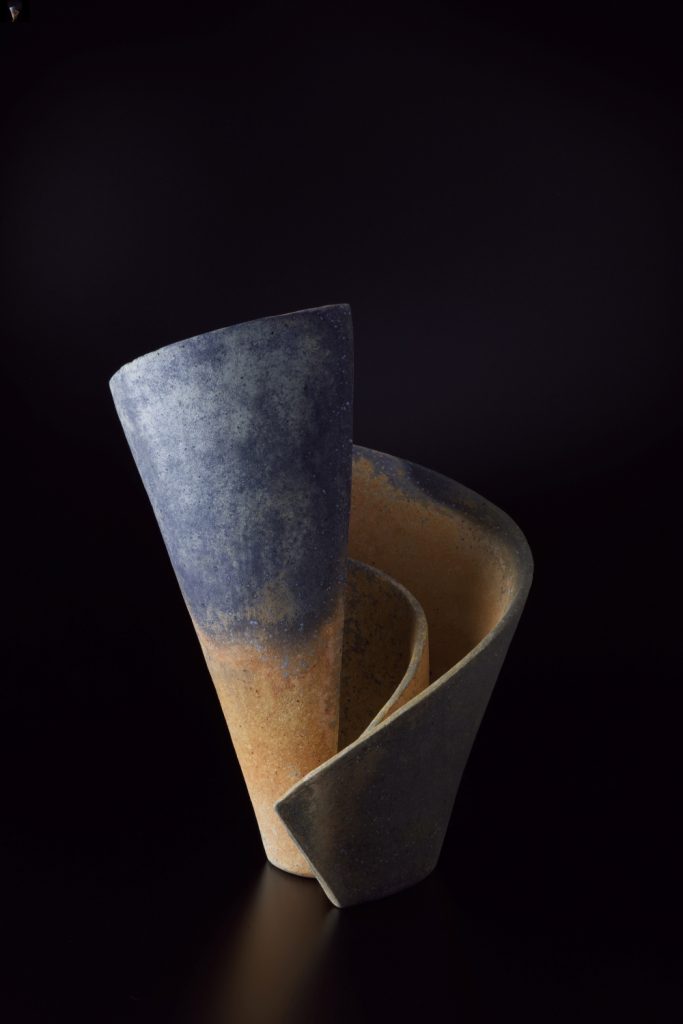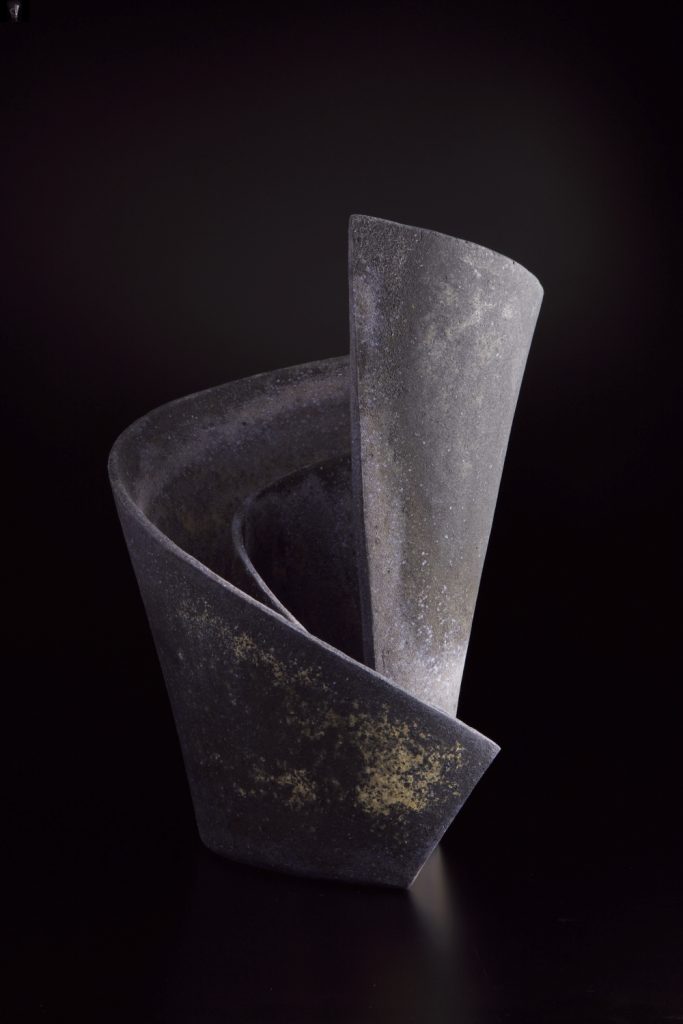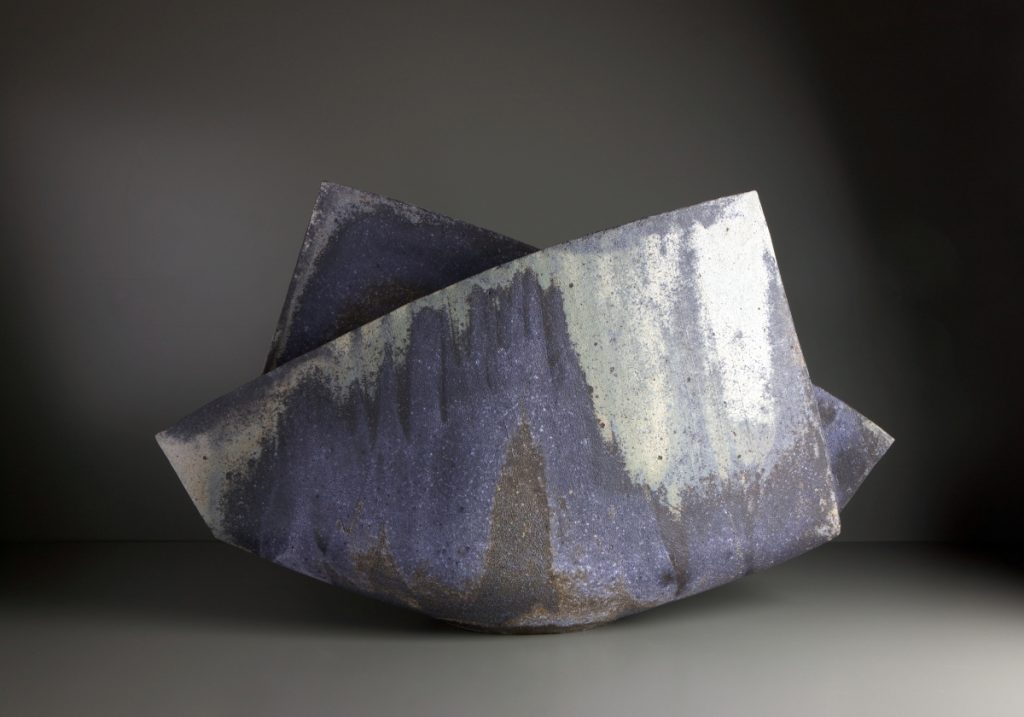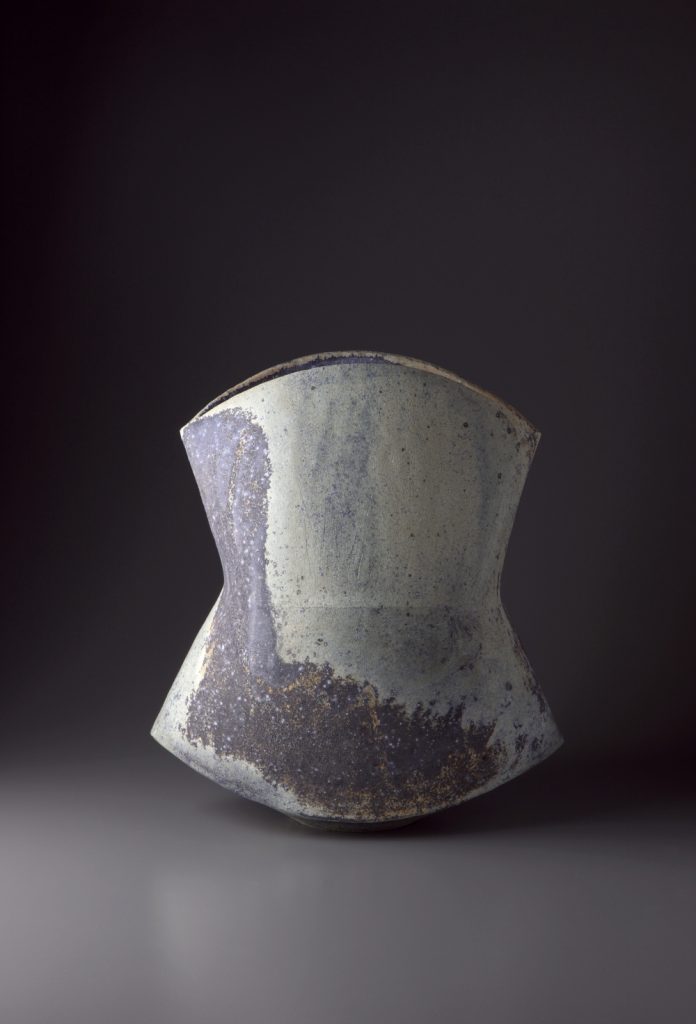It can be said about your work that it embraces significant change every three to four years. Where do you find the resources and ideas to create works similar in style, yet very different and exciting for the viewer?
I change with the passing of time, and because I change, my works must change as well. As the works are the expression of my inner self, they will always change, much like the turning of the seasons.
I have always felt that my work can evolve. The wish of seeing something different and new, the new possibilities, is what excites me. My works are like a diary—with each passing day my life changes and so is my work. I don’t know where the fountain of my imagination comes from, but I do think the nature and environment that had surrounded me in my youth has greatly influenced me.
Your current series, titled Kei (Mindscapes), is characterized by movement and energy, with features like double-walled interiors that swirl and spiral. What sparked the creation of this series?
I wanted to find new vistas for expression, and my previous series did not allow me enough freedom. The ideas I had for this new series was the removal of the base, and the further removal of functionality and symmetry. I also wanted to express the quality of space that could not be seen.
Why does form by itself play such an important role in your work?
Form is expression, and there is more to form than what can be seen with the eye. It must be felt in the space itself. Decorative elements such as colors and textures are secondary.
In Japan, everyone knows what a jar form is. Yet making forms that have never been seen before—this is what I wish to create. The essential qualities of clay are also revealed through form.
Form is expression, and there is more to form than what can be seen with the eye. It must be felt in the space itself.
When did you recognize that the clay found by your house was a material you wanted to work with?
Many years ago, a typhoon swept through Izumo, and a landslide occurred behind my hill-side home. The clay was revealed, and I thought it could be used. It is a typical type of red clay that could have been found anywhere. I found this clay very early on in my career, and I currently use a type that is found about 30 minutes from my home in Izumo. Each clay has its own memory. By unlocking its memory through firing, one can reveal a myriad of colors.
You have experimented with different firing processes and it took you many years to arrive at the current one. Can you detail the process that you’re currently performing?
Quite simply, I first bisque-fire, and then pour silica slip on the surface and begin a main-firing that lasts 40 hours at 1270 degrees Celsius. After this, I remove the silica, and then fire again with a second main-firing of 40 hours at again 1270 degrees Celsius. I use both reduction and oxidation firing to change the colours of each individual work.
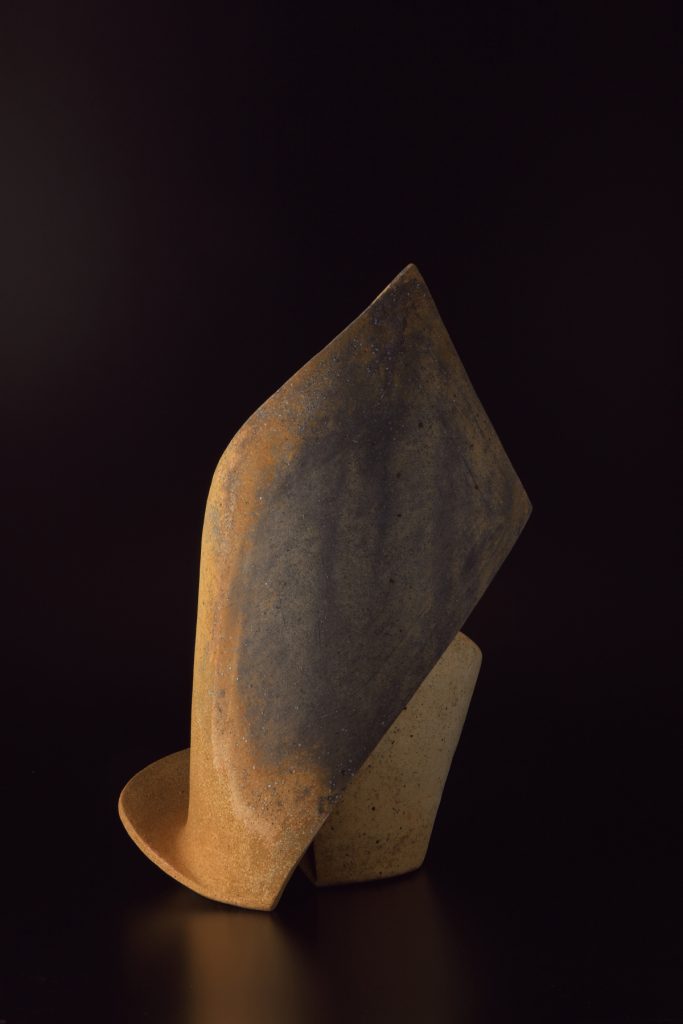
Kei (Mindscape), 2015, High-fired stoneware, 12.6 x 11.6 x 18.3 inches / 32 x 29.5 x 46.5 cm. 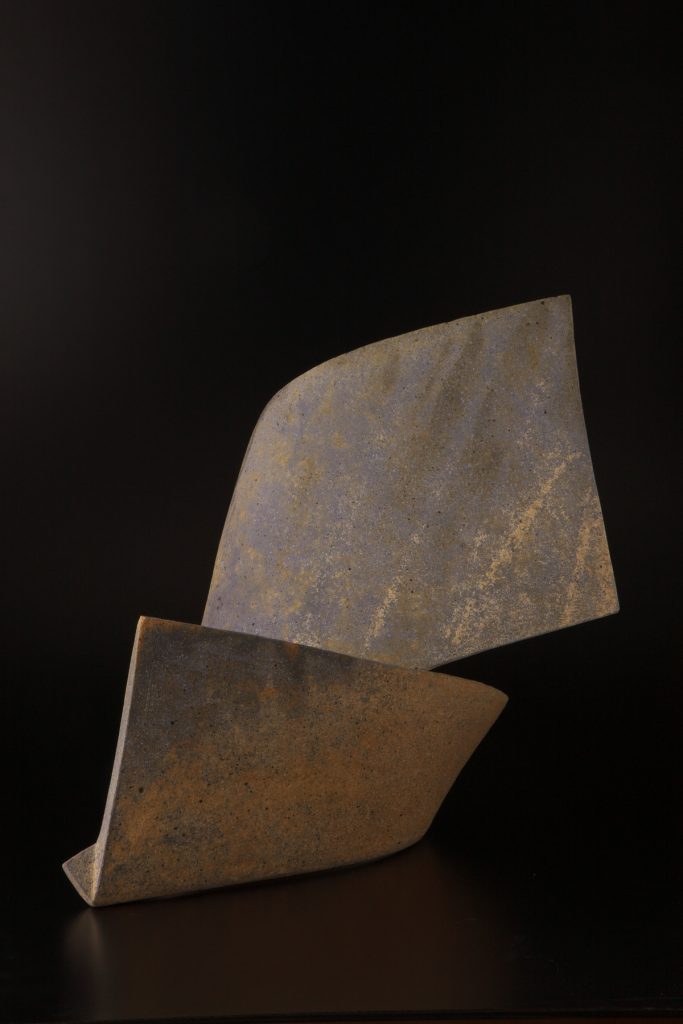
Kei (Mindscape), 2015, High-fired stoneware, 18.1 x 15 x 18.1 inches / 46 x 38 x 46 cm. 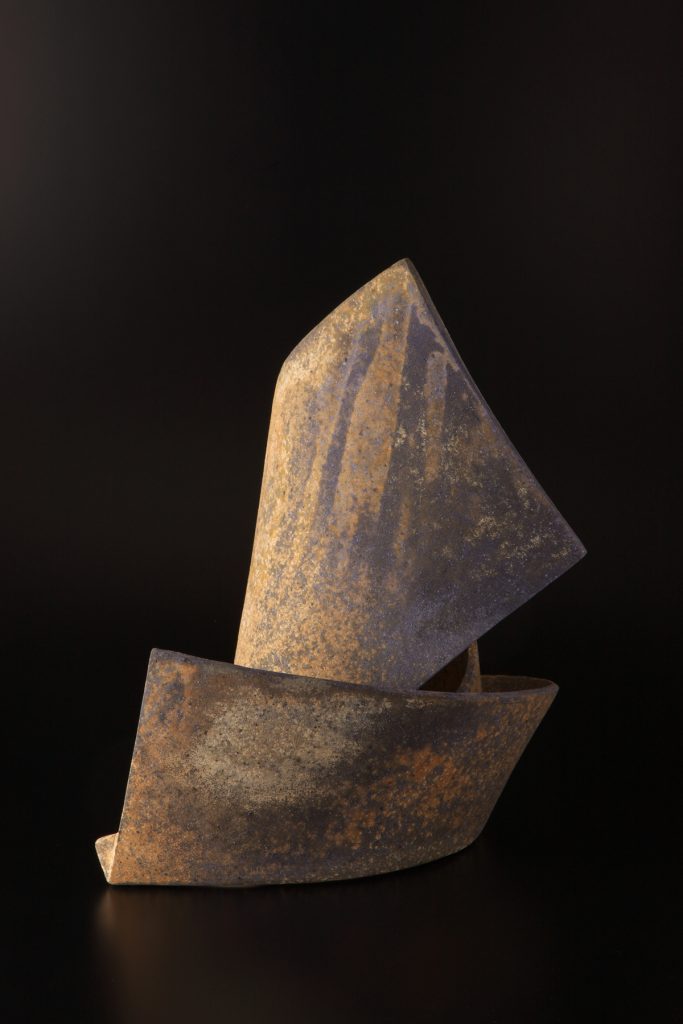
Kei (Mindscape), 2015, High-fired stoneware, 13.8 x 15.7 x 19 inches / 35 x 40 x 48.5 cm. 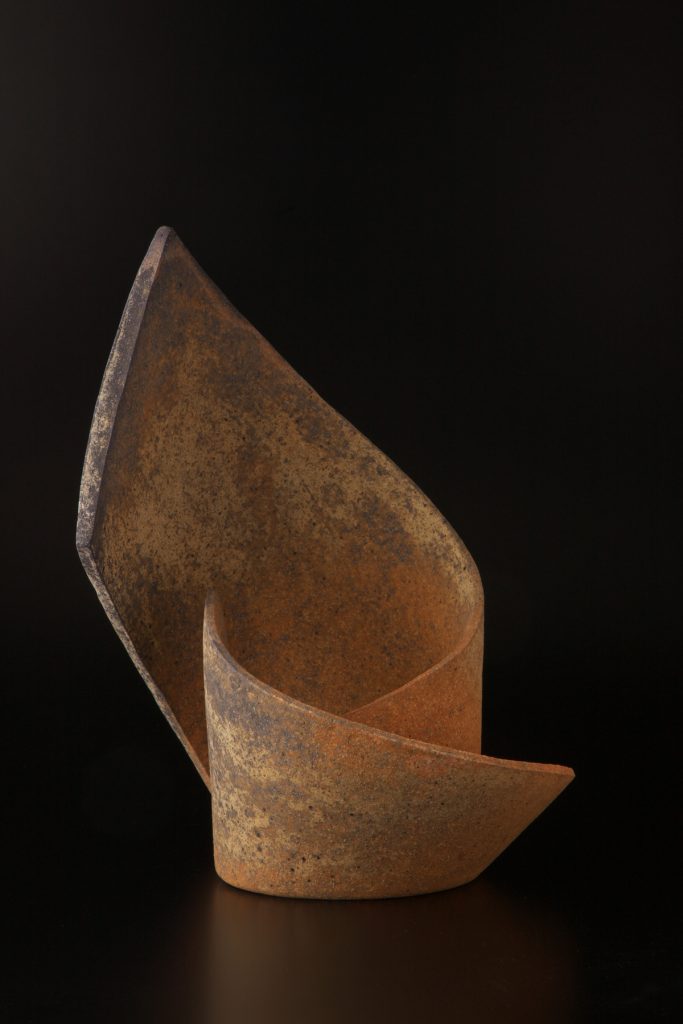
Kei (Mindscape), 2015, High-fired stoneware, 12.6 x 11.6 x 18.3 inches / 32 x 29.5 x 46.5 cm.
There is a strong relationship in your work between unpredictability and control. To what degree do you control the firing process and where does chance intervene?
I fire without using data—only memory and experience help guide me, yet in many ways I can substantially control the memories in colour that I wish to express in my work. Of course, the element of chance is the final element that I cannot control, and it adds a final surprise to each work that I cannot predict. This is not only in regards to colour, but in regards to the final form of my work as well, as the works will move within the kiln.
In the last decade, your work entered many public collections and has captivated a global audience. How do you view the relationship between reward and demand? What do you find most rewarding at this job?
Kansha—when I can make the next work, is when it is most rewarding. In the very beginning of my career, I wished to make a living by ceramics, and I had to make works that sometimes I did not really want to make, but that I knew would sell to a Japanese audience, in particular with the element of functionality. Today, it is gratifying to know that I can create works that I truly want to create. I am grateful to everyone who has supported me throughout the years and allowed me to have this freedom in creating what I wish to make.
The collaboration between you and Yufuku Gallery just turned 18 years old. What are your thoughts about this? Can you recall the first exhibition held at their premises?
Meeting Yufuku Gallery was an important turning point for me, for it gave me a reason to discontinue my affiliation with important “craft” organisations in Japan. By exhibiting at Yufuku, it allowed me to not be swayed by winning competitions and receiving awards, and helped me develop what I truly wanted to create.
My first exhibition at Yufuku was very special, but it was perhaps my exhibition in 2002 that helped me to become confident in expressing what I truly wanted to create. In this light, I am very grateful to Yufuku’s support over the nearly 20 years in being represented by them.
2015. Interview by Vasi Hirdo, published in Ceramics Now Magazine Issue 3.
Translated from the original Japanese by Wahei Aoyama.
Special thanks to Yufuku Gallery for their support in the making of this interview.
The interview is copyright of Ceramics Now, Ken Mihara, and Yufuku Gallery, and cannot be reproduced without permission. All images are copyright of the artist and Yufuku Gallery unless otherwise stated.


